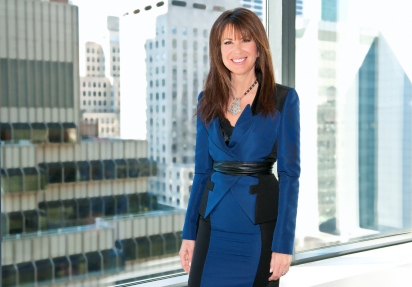“The Emergence of Real Convergence”: An Interview with BrightLine CEO Jacqueline Corbelli – Charlene Weisler

Jacqueline Corbelli, Founding CEO of BrightLine, started out her career as a banker before moving into change management, and then media. What drew her to media, specifically advanced TV advertising, was the sweeping change being ushered in by the Internet and digital technologies in the late 1990s. As an astute executive, she saw the prospect that shifting consumer behaviors held for media platforms and brands and the opportunity to put her change management skills to work to help redefine the relationship between the two. She thus launched BrightLine.
In this interview, Corbelli talks about her company and its place in the media firmament, the metrics and the use of data in advanced television, cross platform applications and how a decade of change across all are leading to a greatly enhanced experience for consumers and big and exciting opportunities for brands to engage them through cross-screen experiences powered by “connected.” She also looks ahead at where digital video and the overall landscape of media is headed over the next few years.
There are five videos that can be viewed at WeislerMedia.
Subject Length (in minutes)
Background (7:47)
BrightLine (5:46)
Metrics and Data (2:59)
Terms and Cross Platform (6:02)
Predictions (6:04)
Below is a short excerpt of the interview:
Charlene Weisler: Tell us about BrightLine.
Jacqueline Corbelli: BrightLine was founded in 2003 with the overall mission to bring television into the interactive fold with online advertising. It was with a very specific approach: We believed that convergence was inevitable. We would not go as far as to predict who the winners and losers would be, because we believed then and as much so today that consumers and the choices they continue to make to weave Internet powered activities more and more into their lives will be the ones to determine that endgame. What consumers are actually doing is what means the most to an advertiser trying to reach, connect and engage them. We wanted to help advertisers stay on top of [and] out in front of how TV viewers’ behaviors were changing as digital technologies were sweeping through. So from that perspective, it was great to have started the company in 2003.
Today we couldn’t be closer to our mission. We have completely repositioned the company in order to take advantage of what we see as the emergence of real convergence. Convergence is finally here. Connected TV technology in the form of smart TVs and over-the-top, which have been around for a little while, now have an accelerating adoption rate. So what BrightLine does is provide the TV equivalent of rich media advertising online or on mobile. We do that by delivering interactive video advertising to connected homes. Whether it’s through your smart television or your Roku or Amazon Fire TV device, or your Xbox or PlayStation box, we have engineered a technology and ad product suite that allows any digital or TV advertiser to supplement their commercials with interactive video ads.
CW: In fact, BrightLine needed to shift its emphasis in advanced television advertising as the medium and consumers’ behavior evolved over the past ten years.
JC: Yes. For us we knew it would be about spotting a particular moment in time. With the emerging trend in smart TV use and OTT devices we saw a way to open up interactive television advertising to more homes simultaneously and thereby make it even more valuable to advertisers. Until this point our focus was about building and understanding on a very deep level the remote control click behavior of TV audiences. Our work was almost exclusively done on satellite, cable and telecom platforms. We were, and we continue to do some of this, creating interactive TV advertising experiences that were video rich and immersive.
We gave the viewer a reason to participate in the ad. We made the pivot to shift as the connected television adoption got underway, as Samsung, LG, Phillips in the smart TV space combined with users of Roku and others began growing rapidly. It was becoming commonplace for us as consumers to access the video content that we wanted to watch by accessing it through the internet versus watching it in real time or our VOD service.
Around the time that we made the shift, there was one statistic that showed that just 54% of TV audiences watch TV in the traditional way and 46% do not. Forty six percent of us watch TV via nontraditional means whether that means over the Internet or VOD, DVR or pay per view. So for us it was one of those calculated risks that we needed to take to meet the market where it was going and be in a position through the use of HTML5 to code and create ads that could be delivered across the preponderance of living rooms that would increasingly be accessing TV content via the Internet, regardless of how they were connected.
Interview conducted by Charlene Weisler, Weisler Media LLC. She can be reached through her research blog www.WeislerMedia.blogspot.com or at WeislerMedia@yahoo.com. Full disclosure: Charlene hosts a street art blog on The Starry Eye blog community
research blog www.WeislerMedia.blogspot.com or at WeislerMedia@yahoo.com. Full disclosure: Charlene hosts a street art blog on The Starry Eye blog community
Read all Charlene's MediaBizBloggers commentaries at Media Insights Q&A.
Check us out on Facebook at MediaBizBloggers.com
Follow our Twitter updates at @MediaBizBlogger
The opinions and points of view expressed in this commentary are exclusively the views of the author and do not necessarily represent the views of MediaBizBloggers.com management or associated bloggers. MediaBizBloggers is an open thought leadership platform and readers may share their comments and opinions in response to all commentaries.


